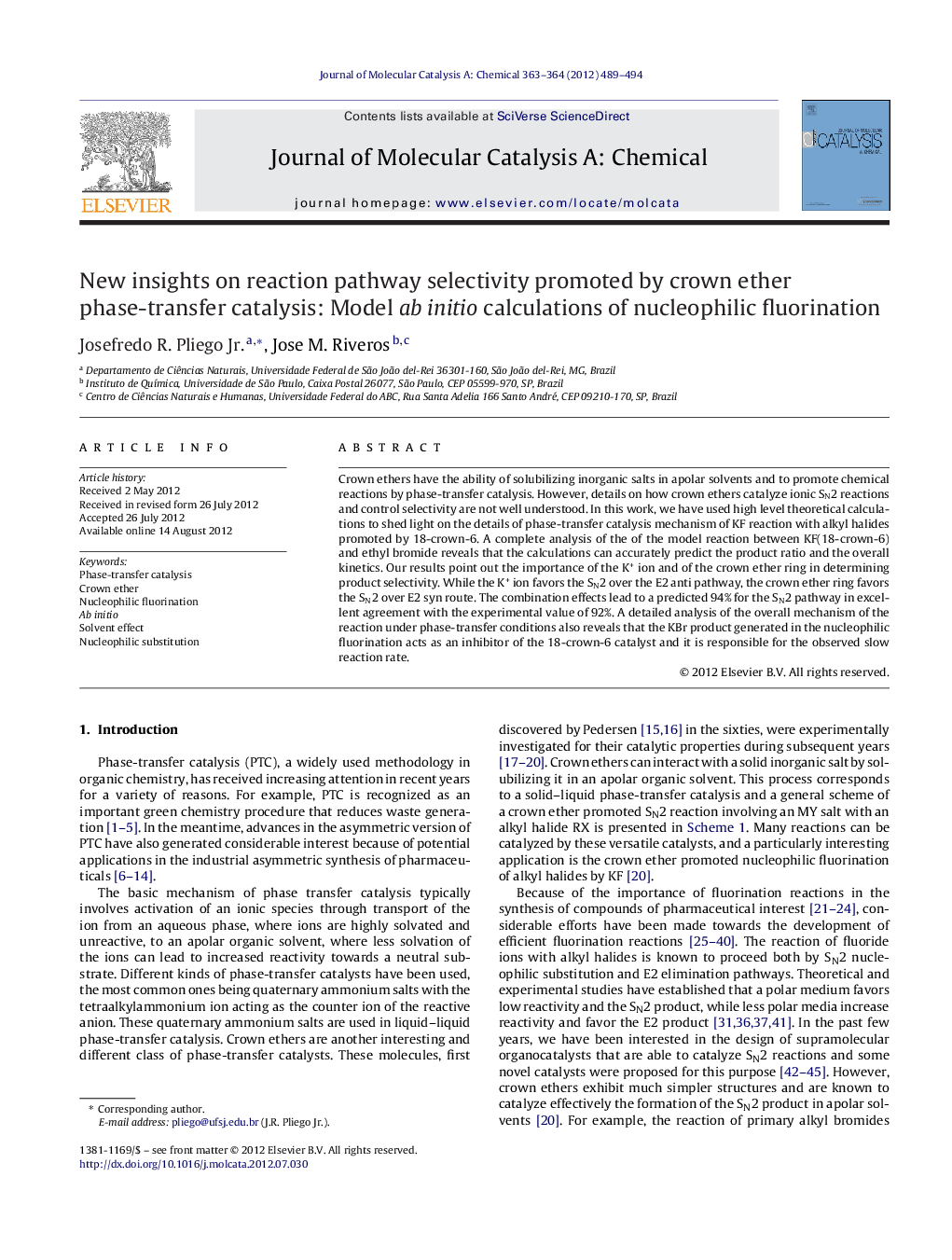| Article ID | Journal | Published Year | Pages | File Type |
|---|---|---|---|---|
| 66065 | Journal of Molecular Catalysis A: Chemical | 2012 | 6 Pages |
Crown ethers have the ability of solubilizing inorganic salts in apolar solvents and to promote chemical reactions by phase-transfer catalysis. However, details on how crown ethers catalyze ionic SN2 reactions and control selectivity are not well understood. In this work, we have used high level theoretical calculations to shed light on the details of phase-transfer catalysis mechanism of KF reaction with alkyl halides promoted by 18-crown-6. A complete analysis of the of the model reaction between KF(18-crown-6) and ethyl bromide reveals that the calculations can accurately predict the product ratio and the overall kinetics. Our results point out the importance of the K+ ion and of the crown ether ring in determining product selectivity. While the K+ ion favors the SN2 over the E2 anti pathway, the crown ether ring favors the SN2 over E2 syn route. The combination effects lead to a predicted 94% for the SN2 pathway in excellent agreement with the experimental value of 92%. A detailed analysis of the overall mechanism of the reaction under phase-transfer conditions also reveals that the KBr product generated in the nucleophilic fluorination acts as an inhibitor of the 18-crown-6 catalyst and it is responsible for the observed slow reaction rate.
Graphical abstractFigure optionsDownload full-size imageDownload high-quality image (176 K)Download as PowerPoint slideHighlights► The central K+ cation favors SN2 over E2 anti. ► The crown ring favors SN2 over E2 syn. ► The released KBr inhibits the catalysis.
